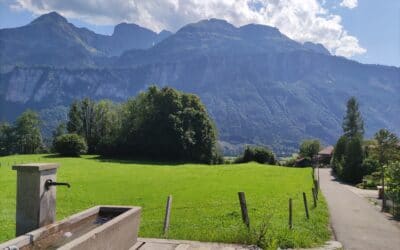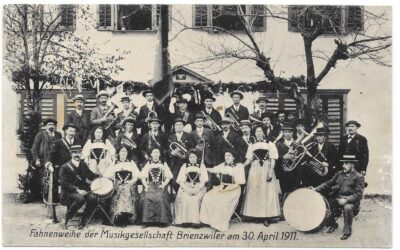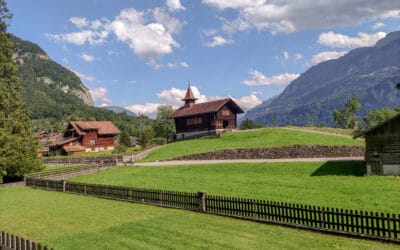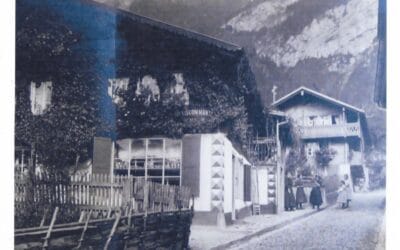History of the Coat of Arms
“Wyler am Brünig”, as Brienzwiler was once called, has always been located on the important transit axis of the Brünig Pass. The old path led from Kienholz (Brienz) via Hofstetten to the “Schloss” district of Brienzwiler and then across the present-day village center to Aenderdorf and from there towards Brünig. The field name “Schloss” indicates that a watchtower once stood at the raised entrance in the west of the village.
The white diagonal stripe on a blue background refers to the transit road from Lake Brienz to the Brünig Pass. The stripe is adorned with a red tower. Symbolically, it could be used to oversee activities on this transportation route.
Another reference to the tower traces back to the von Rudenz family, which owned larger estates in Brienzwiler. The municipal coat of arms of Brienzwiler was created in 1944.
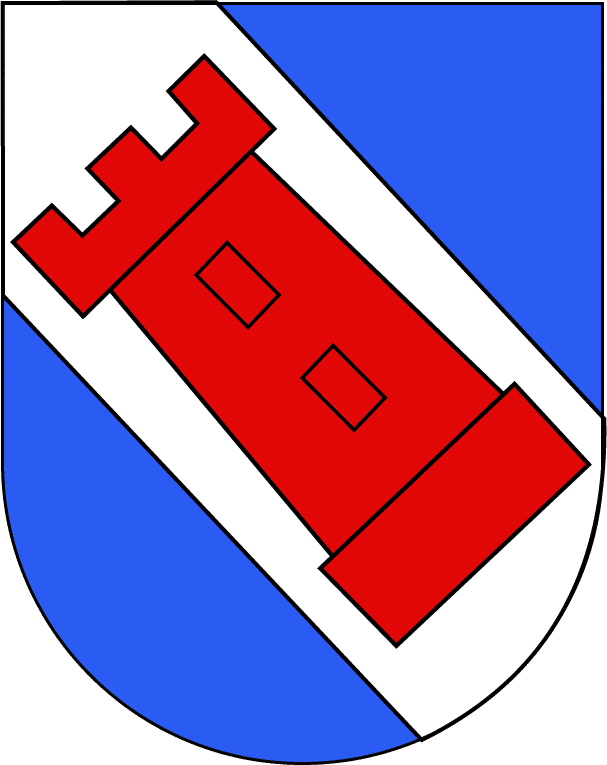
Gässlihaus
The current community house is commonly known as “Gässlihaus.” In addition to the municipal administration and the tourism office, it also houses the post agency of Brienzwiler and the popular village shop.
The tourism office is located at Gässlihaus on Dorfstrasse 19. Detailed information about offers and activities in the region can also be found on the Brienz Tourism website.
In the coffee corner you can buy sandwiches and provisions for your hike. Anna’s Dorfladen stands for quality and freshness from the region. “Bread straight from the bakery” and weekly specials are part of the offer. Annabelle and Adrian von Bergen have been running Anna’s Dorfladen GmbH since 2008. However, the history of the village store in the romantic village of Brienzwiler goes back to the 1940s.
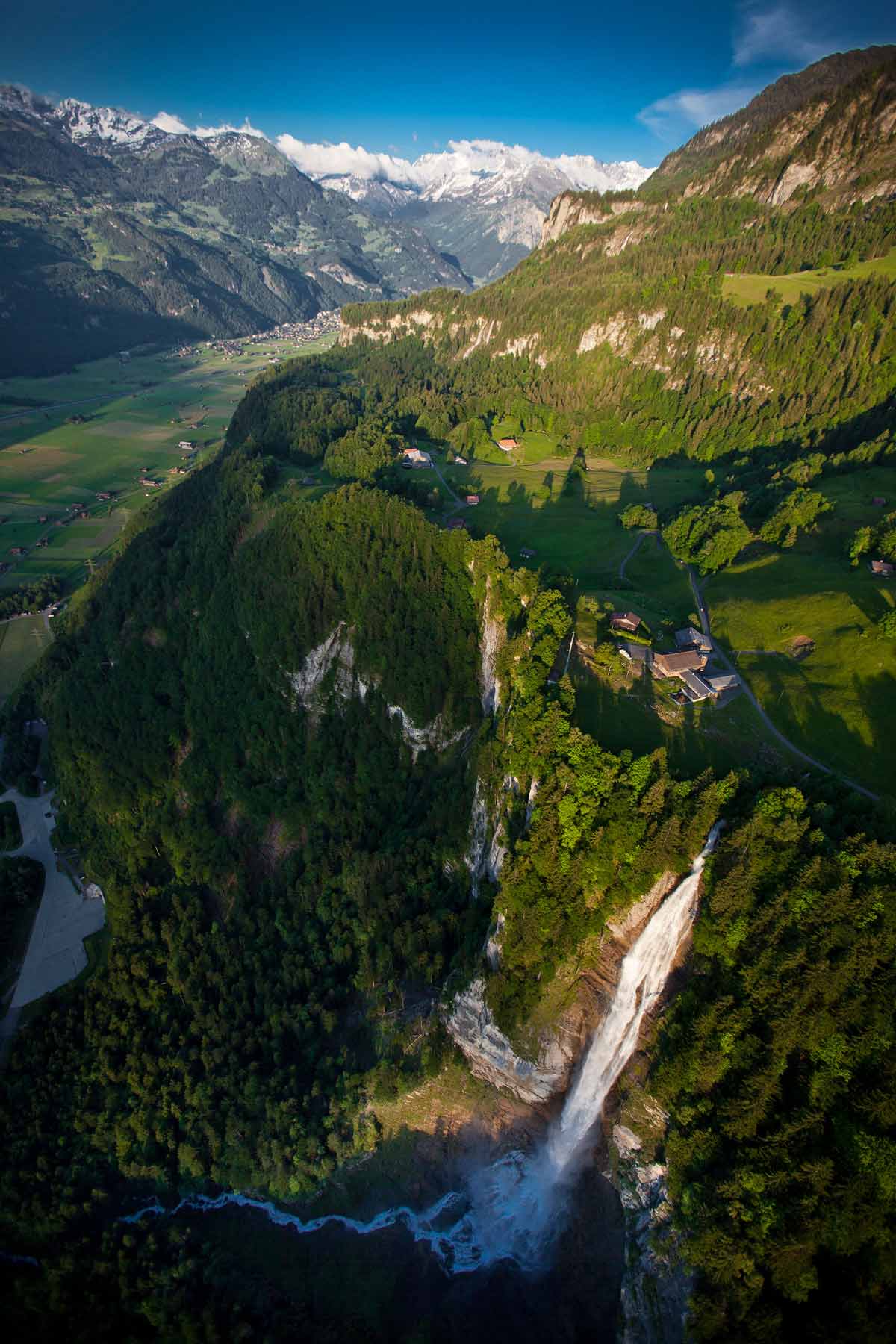
Oltschiburg
Secret flight exercise behind the Oltschiburg with the Fieseler Storch
On November 19, 1946, an American Douglas DC-53 (Dakota) crashed in difficult terrain at 3350 m above sea level on the Gauli Glacier. All occupants survived the crash landing in the eternal ice. As a rescue using conventional means was impossible and an evacuation of the poorly equipped and exhausted victims on foot was out of the question, only one rescue option remained. Pilots of the Swiss Air Force had recently conducted training flights with the aircraft type known as Fieseler Storch, specifically the Fieseler Fi 156. These training flights aimed to drop light troops in challenging alpine terrain during the winter. The gently sloping area behind the Oltschiburg was chosen as the test site for these pioneering efforts.

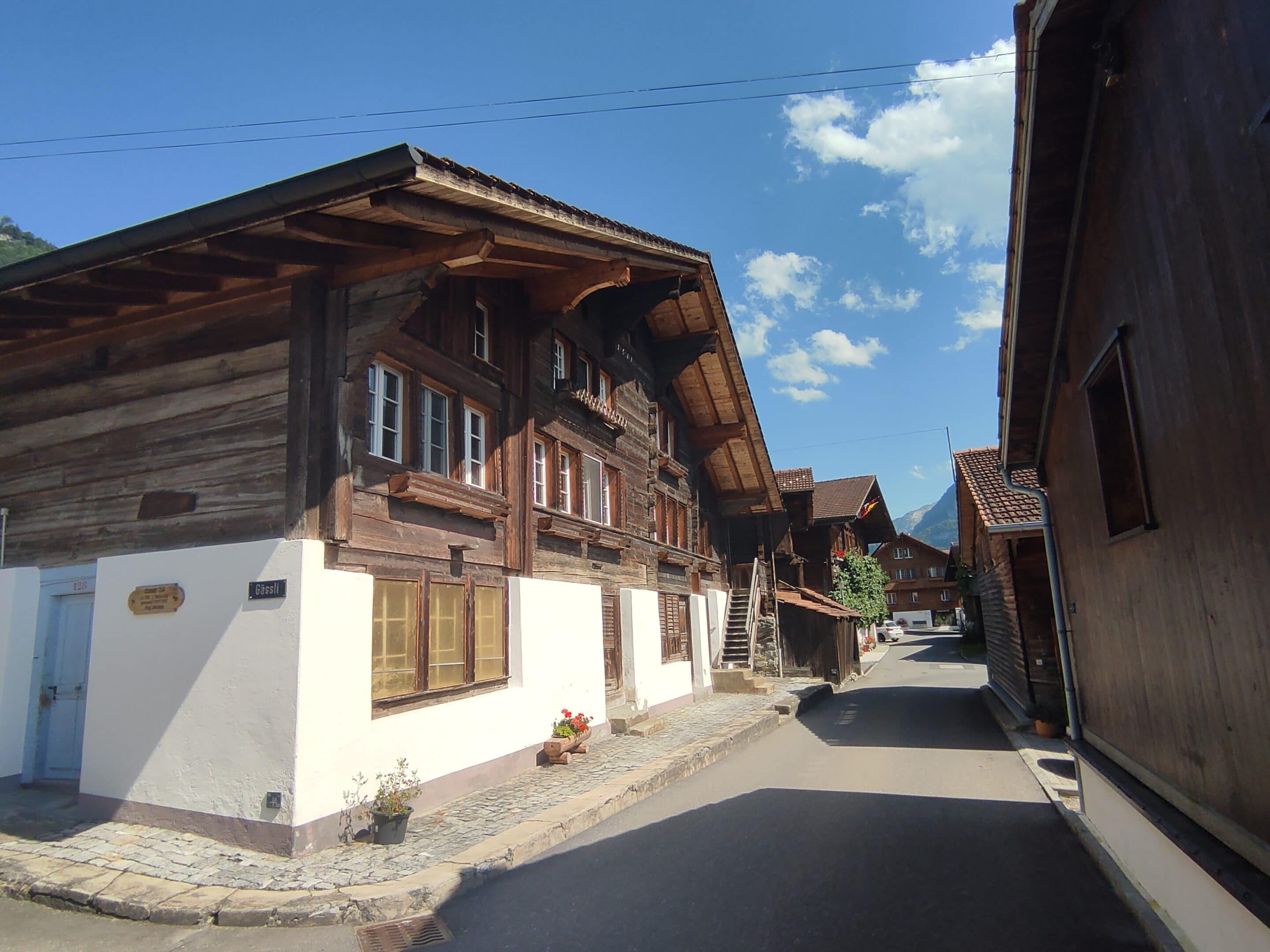
Salt House
In the past, each municipality had its own salt house. The managers often had the task of ensuring the salt supply on behalf of monasteries. The importance of salt increased in the 12th and 13th centuries with the rise of livestock farming and cheese production, especially in alpine regions.
Water supply
The water supply of the municipality of Brienzwiler can be traced back to the year 1895. At that time, the first assessments were conducted to determine how to capture the spring water from the “Fahrnigraben” and transport it to the village. However, for cost reasons, the project was abandoned.
A few years later, in 1902/1903, a second attempt was made to realize a water supply system. A new plan, developed by a Zurich company with a cost estimate of CHF 40,400, convinced the population, and on June 25, 1904, the execution of the project was approved, laying the foundation for today’s water supply system.
The work began on September 17, 1904, and lasted until October 1905. After the completion of this work, the captured springs delivered between 2,000 and 4,000 liters per minute, depending on the water level.
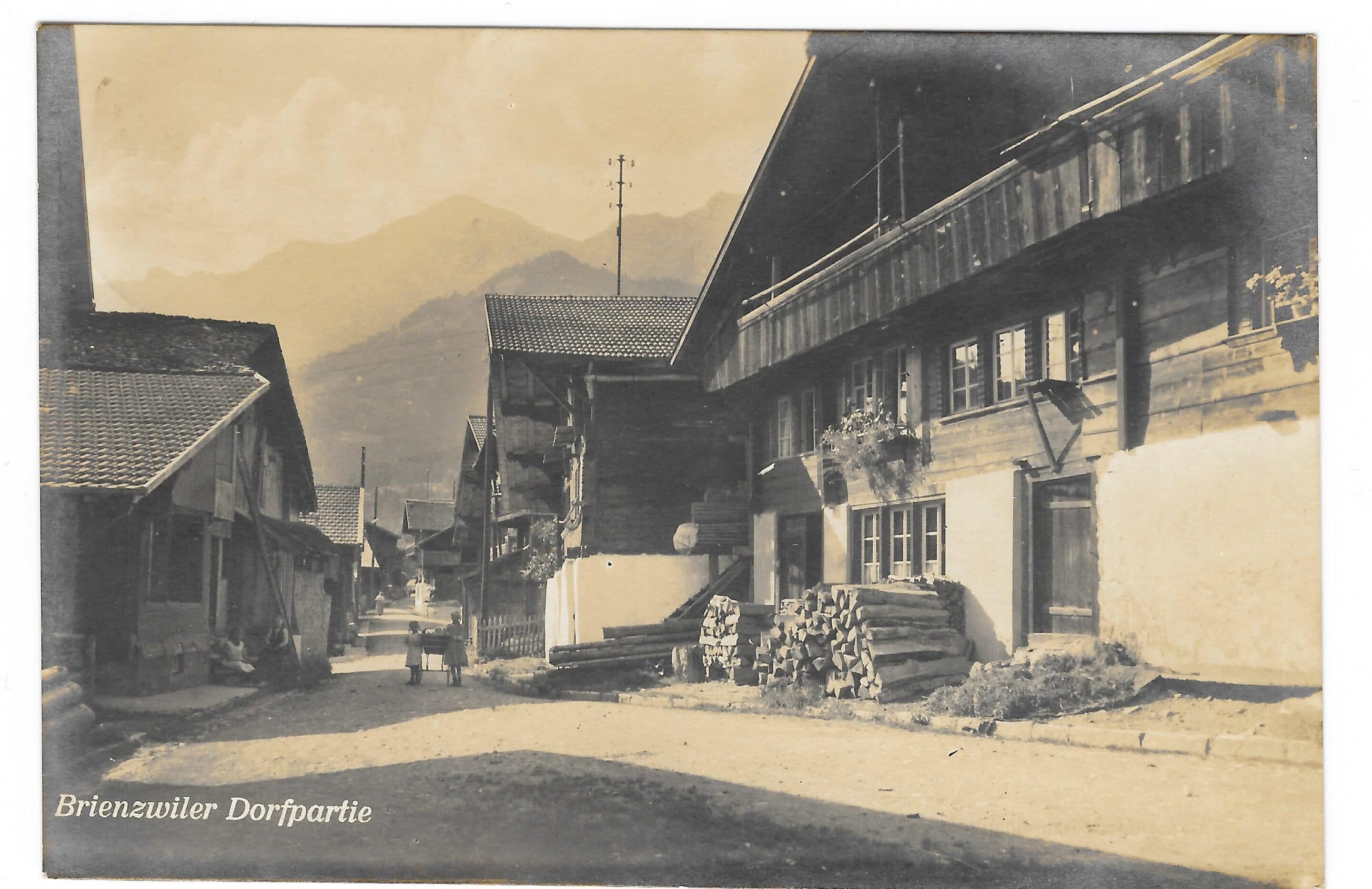
Amacher House
The so-called “Amacher House” is one of the oldest documented buildings on the land of Brienzwiler. Built by a Dutch mercenary in the 16th century, it has been in the possession of the Amacher family since 1836. The last direct descendants of the original buyer, Melchior Amacher, the brothers Alfred and Paul Amacher, ultimately sold the house in 1984 to their niece, Elisabeth Beugger-Schild. With a lot of manual labor, the Beugger-Schild couple maintained the “Amacher House” in the following years. In this context, the historic tiled stove from 1891 was also restored. Health problems led the owners to bequeath the house to the municipality of Brienzwiler in 1992. It was intended that the municipality would use the house for cultural purposes and preserve it in its current condition. In the meantime, the Amacher House has been transformed from a thrift shop into a book corner, where parts of the original inventory are still present today.
Locations of the Virtual Tour
Nature garden
Nature gardenGoethe on the Wyler BridgeIt is October 13, 1779 – three well-dressed gentlemen step onto the Wyler Bridge down in the valley. One of them would later dictate to his secretary at the Hotel Kreuz in Brienz how they marveled at the “terrifying mountain...
Griid
GriidOltschiburgSecret flight exercise behind the Oltschiburg with the Fieseler StorchOn November 19, 1946, an American Douglas C-53 (Dakota) crashed in rugged terrain at 3350 m above sea level on the Gauli Glacier. All occupants survived the crash landing in the...
Fresco Schoolhouse
Fresco SchoolhouseFresco Schoolhouse/Allmendnussen"God gave us the nuts; let us crack them together!"This saying accompanies the sgraffito at the Brienzwiler schoolhouse. It was created by Heinz Schild and his team to commemorate the construction of the new gymnasium....
Church
ChurchChurchThe small, cozy wooden church with 160 seats was built with contributions from the canton and the Synod Council, as well as countless volunteer hours from the local community, and was consecrated in 1940.The building materials primarily come from the...
Änderdorf
AenderdorfStart of the Zwergliloch TrailThe circular trail to Zwergliloch is a varied hike around Brienzwiler. Duration is approximately 1 hour. NOT SUITABLE FOR PEOPLE WITH MOBILITY IMPAIRMENTS AND SMALL CHILDRENBy Stagecoach over the BrünigThe Brünig Pass road has...

